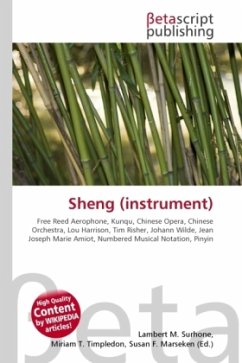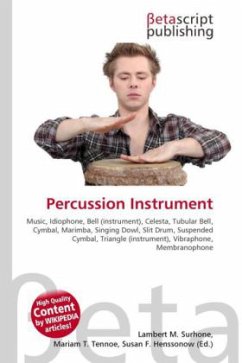
Pi (Instrument)
Versandkostenfrei!
Versandfertig in 6-10 Tagen
23,99 €
inkl. MwSt.

PAYBACK Punkte
12 °P sammeln!
Please note that the content of this book primarily consists of articles available from Wikipedia or other free sources online. Pi is the generic term for any of a variety of quadruple reed oboes used in the traditional music of Thailand. It is very similar in construction and playing technique to the Cambodian sralai. An entirely different instrument, a bamboo free reed pipe called pi joom, is used by the Lanna of Northern Thailand. The pi nok (31×3.5 cm) is smallest among pi nok, klang, and nai. Pi noks have been played since the ancient times. The pi klang (37×4 cm) is most often heard in...
Please note that the content of this book primarily consists of articles available from Wikipedia or other free sources online. Pi is the generic term for any of a variety of quadruple reed oboes used in the traditional music of Thailand. It is very similar in construction and playing technique to the Cambodian sralai. An entirely different instrument, a bamboo free reed pipe called pi joom, is used by the Lanna of Northern Thailand. The pi nok (31×3.5 cm) is smallest among pi nok, klang, and nai. Pi noks have been played since the ancient times. The pi klang (37×4 cm) is most often heard in film scores. The pi nai (41 42×4.5 cm) is commonly seen in Thai literature such as Pra Aphaimani. The pi cha nai is pi song ton. Body part is called lao pi. Mouth part is called "lumpong". Both parts are made from wood or ivory. It is presumed that the Thais obtained this musical influence from India due to its similarity to the Indian shehnai. Pi have been used in Thai since the Sukhothai period. At present, it is played together with the pi chawa in parades.












